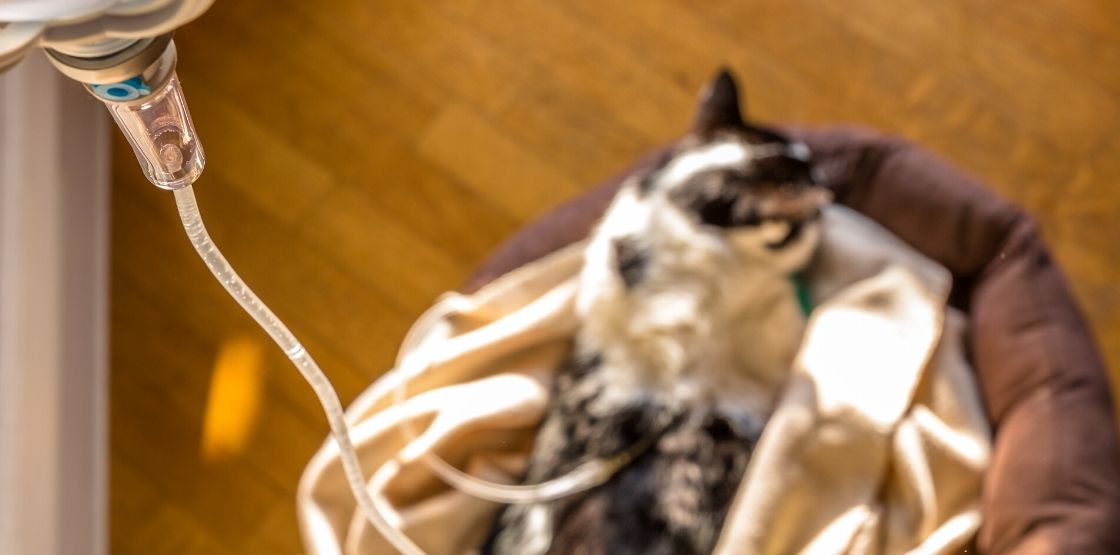What is Feline Kidney Disease?
You might be curious to learn about feline kidney disease, which is often referred to as renal failure. Unfortunately, cats are especially prone to developing a chronic form of kidney disease that may occur over a period of months to years. This disease process is more common in older cats, with roughly only 10% of cases being in cats under three, according to VCA Animal Hospitals. In contrast, acute or rapid onset kidney disease may be more common in younger cats, who may consume poisons or toxic plants.
Causes of Kidney Disease
A variety of different things can lead to damage to the kidneys. Acute kidney disease is more commonly caused by issues such as:
- Poisonous or toxic plants and chemicals. This includes lilies, which are highly toxic to cats and antifreeze.
- Kidney infections
- Urethral blockages
- Shock from either dehydration or losing blood quickly
- Trauma, such as a broken pelvis
- Reduced blood flow to the kidneys as with some cases of heart failure
Chronic disease can be caused by even more things and may occur before or after an acute onset of kidney failure. Some potential causes of chronic kidney disease include:
- High blood pressure
- Hyperthyroidism
- Kidney infections
Symptoms of Kidney Disease
You may notice different signs and symptoms of kidney disease in your cat. Several of these relate to urination, which is often the first change owners note. Cats may begin to urinate more frequently, usually because the urine is more dilute and the kidneys are not able to filter properly. Your cat may be at a higher risk for urinary tract infections or even kidney infections because of this dilute urine. If you can see the urine, it may look cloudy or even bloody, depending on if there is an infection or not.
As your cat urinates more frequently, you may notice that he or she is drinking excessively. They do this to replace the fluids they are losing through their urine because the kidneys are not able to concentrate the urine.
Other signs you may notice in your cat include vomiting. Weight loss and a decreased appetite are also common in many cats affected with kidney disease, especially chronic kidney disease. The decreased appetite may relate to the build-up of toxins in their body, or it may relate to ulcers around the mouth, particularly on the gums or tongue. Some cats also develop constipation because their body is losing a significant amount of fluids through the urine.
If you get a whiff of your cat's breath, it may smell like ammonia from the build-up of ammonia in their body with kidney disease. Some owners of cats with kidney disease also note their weakness and even indifference, with the kitties not engaging in normal activities like they once did.
Diagnosing Kidney Disease
Diagnosing kidney disease can often be done with blood work and a urinalysis. Some of the values that are evaluated on blood work include BUN and creatinine. A newer test is known as the SDMA, and this can help diagnose kidney disease earlier than relying on BUN and creatinine elevations alone, so many veterinarians are starting to use it as a screening test, particularly in older pets.
Related Search Topics (Ads):
A urinalysis is also an important step in diagnosing kidney disease in cats. It will generally look at how well the kidneys are concentrating and if there are components in the urine such as protein, which should not normally be there. A final step in most urinalyses is a sediment evaluation, where abnormal cells, crystals and bacteria are checked.
More aggressive diagnostics are sometimes warranted. These can include X-rays, an ultrasound, or even a biopsy of the kidneys.
Treatments for Kidney Disease
Treatments for feline kidney disease often depends on the underlying cause, if one can be identified. If there are issues such as a bladder rupture or urethral blockage, surgery is often needed to correct the problem.
Conversely, medication management might be needed if your cat has a health condition such as hyperthyroidism or elevated blood pressure.
A mainstay of kidney disease treatment is a kidney specific diet. Some examples of these are Hill's k/d and Royal Canin's Renal Support. These diets tend to have restricted amounts of protein and phosphorus, and they are usually enriched with components such as Vitamin D and omega-3 fatty acids.
Fluid therapy may also be necessary. In early stages, your pet may just need to have constant access to clean, fresh water, which they should have anyway. As kidney disease progresses, your kitty may need to receive fluids under their skin at home. Talk to your veterinarian about potential options.
Can Kidney Disease Be Prevented?
Certain causes of acute kidney disease can be prevented. Keep toxic plants out of your house and away from your cats and do not let your cats wander outside, where they may be exposed to hazards such as people poisoning them (even unintentionally) or being hit by a car.
When kidney disease gets diagnosed, we often want to know what we could have done to prevent it. Unfortunately, in many cases, there is nothing that could be done other than keeping your pet hydrated with access to fresh water and maintaining them on an age-appropriate diet, such as a senior cat food for senior cats, which often has the protein amounts mildly restricted. Regular screening blood work and urine tests are especially important as your pet ages and will help your veterinarian diagnose issues before they truly become a problem.
